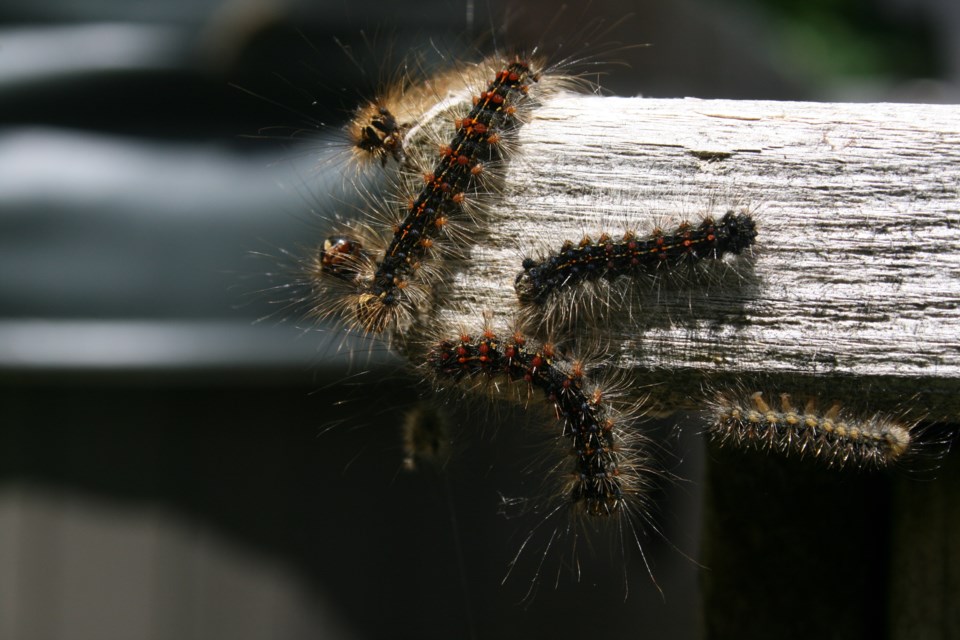Like a moth to a flame, one Simcoe County citizen sought answers from the municipality about the Gypsy Moth infestation hoping their wisdom would be illuminating.
Reader Connie Dawe of Midland reached out to Village Media regarding a letter she sent on June 5 to the Town of Midland, wanting to know why the town “didn’t take action to spray prior to these nasty critters hatching,"
“I know that the entire County is suffering from this too, and who knows how much further beyond that,” Dawe sympathized in her email. “I’m reaching out to anyone who might be able to make a difference. I read Midland Today daily and hopefully someone can take action against these nasty caterpillars. Thank you.”
Village Media contacted town operations manager Dylan Flannery regarding Ms. Dawe’s correspondence.
Flannery responded on June 7 with the following:
“The Town works with the County of Simcoe to determine the impacts of the gypsy moth in our area, and the County’s forestry staff monitor impacts on forests and tree conditions in the region" Flannery said. "Currently, there is no substantive health impact foreseen to overall forest health.
“Based on this and from a cost/benefit perspective, aerial spraying of BTK (a microbial insecticide) has not been recommended to be warranted at this time."
Flannery noted that the Severn Sound Environmental Association (SSEA) has developed an informative factsheet on Gypsy Moths which is posted on the town's website.
"The County, SSEA, and Town will continue to monitor the situation as it progresses," Flannery said.
According to the fact sheet, outbreaks from the European-based insect surge every seven-to-ten years, with the caterpillar larvae chewing holes through many of the 300 plant types (mainly hardwood trees) they feed upon.
The colours of the small caterpillars range from light grey to black, with six pairs of red dots and five pairs of blue dots on their bodies. Upon emerging from their dark brown pupa shells, adult moths are brown with feathery antennae for males, and white for females.
Physical contact with Gypsy Moth hairs can cause skin irritation and allergic reactions resembling poison ivy in some cases.
As a countermeasure to the infestation, property owners are advised to scrape and remove egg masses year-round, set up shade traps to collect the larvae and moths throughout the warm months and to place these “nasty critters” in soapy water for over 48 hours continuously.
To learn more about the Gypsy Moth’s life cycle and species identification, videos on the insect are available on the Severn Sound Environmental Association’s YouTube channel. Information on Gypsy Moths, and roughly 50 other environmental threats in the area, can be found on the Engaging Midland website's invasive species page.



